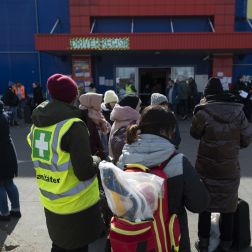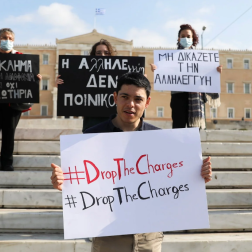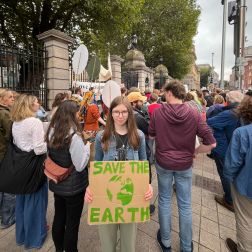- 5 mins read time
- Published: 10th March 2022
Parts Of Somalia Hit By Severe, Climate-Fueled Drought
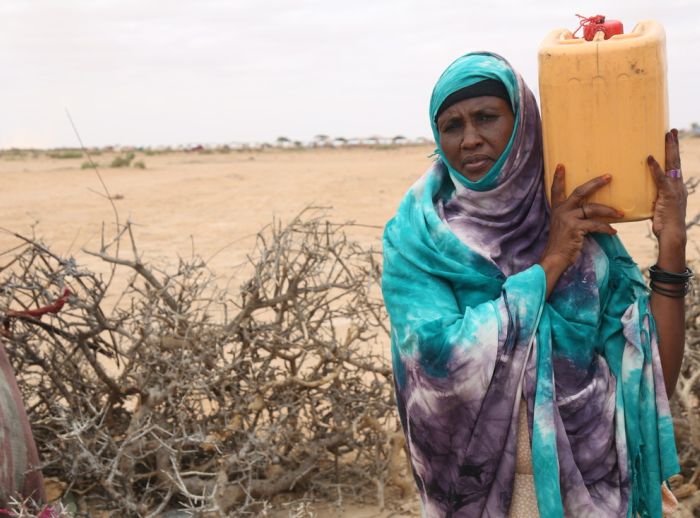
Nearly 90 percent of the country faces severe water shortages leaving 3.5 million people in extreme hunger after driest season in 40 years
Nearly 90 percent of Somalia is now in a severe drought, following three consecutive failed rainy seasons. Some areas are facing their driest season in 40 years. Nearly 3.5 million people are already acutely food insecure and millions more are now at risk of going hungry by the beginning of next year.
Climate projections show that the country is facing a fourth consecutive failed rainfall season. With no respite in sight, the chances for planting next season’s crops or finding grazing land for livestock is vanishing.
“Some have already experienced intense drought for more than a year and have had to watch their livestock, crops, and savings perish in front of their eyes,” says Oxfam’s Country Director in Somalia, Amjad Ali. “They urgently need lifesaving water, food, and cash.”
Many farmers and pastoralists have told Oxfam harrowing stories of how the drought has devastated their lives. Maryan Abdulaahi, a woman farmer living at the outskirt of Dudumaale village reports that they can no longer count on their traditional reservoirs, known as berkeds, for their water.
We did not receive rain for two seasons,” she says. “Our livestock and own lives are in danger. In Dudumaale we used to fetch water from berkeds, but all berkeds are empty right now. A drum of water costs $4, which we cannot afford.
Most natural water sources have dried up, pushing up the price of potable water. The price of a 200-litre water drum has jumped by as much as 172 per cent in some areas, according to a recent report by the Famine Early Warning System.
Persistent climate-fueled drought, compounded by ongoing conflict, locusts, and COVID-19, has fueled a humanitarian crisis in Somalia and will leave 7.7 million people – nearly half the population – in urgent need of assistance in 2022. This is a 30 per cent rise since 2021. Somalia already ranks highest in the world Global Hunger Index with over half its population suffering from extremely alarming levels of hunger and malnutrition.
Loss of water and livestock
Khadra Yusuf Saleban, a 48-year-old displaced woman now living in the Bali-Docol camp says, “I have many fears about [having no] water and food for my children and my parents. Our livestock is the backbone of our life. I lost it all in the last drought. Without water and food there will be death to our livestock and to our families, particularly children and elderly.”
Somalia is on the frontline of climate change and has experienced more than 30 climate-related hazards since 1990, including 12 droughts and 19 floods.
Oxfam and partners have already reached nearly 185,000 of the most vulnerable people across the country, with clean water and sanitation, food, and rehabilitation programs
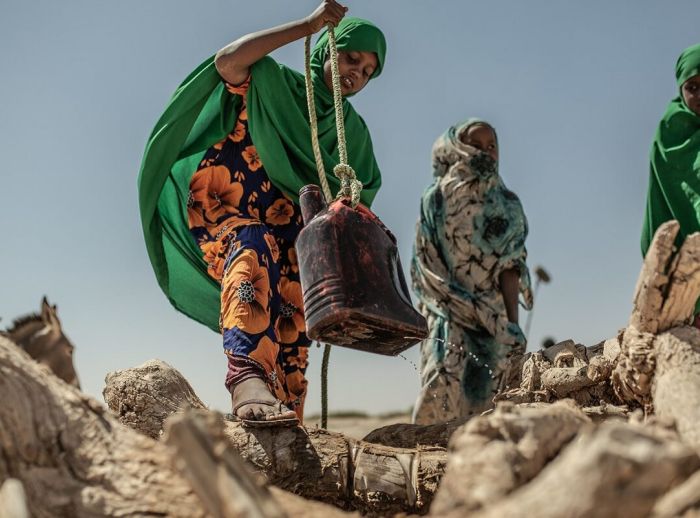
Aydrus Daar, executive director of Wajir South Development Association (WASDA), one of the local organizations Oxfam partners with, says the current situation is as bad as he has ever seen.
“I have been involved in droughts since 1991 and I have never seen a drought that has impacted people as badly as has this one. Many pastoralists have lost 100 percent of their livestock. This has never occurred in living history. Our biggest concern is an imminent famine.”
Parts of Somalia are still recovering from a famine in 2011. Oxfam’s Somalia Director Amjad Ali says the country may face a similar emergency, and that humanitarian groups lack the funding to avoid a repeat of the 2011 crisis.
“In the 2011 drought crisis an estimated 50,000–100,000 people lost their lives,” Ali says. “Despite the warnings, the international humanitarian system did too little too late. We must make sure that history does not repeat itself. We must act now. More than a third of the humanitarian appeal for Somalia this year is unfunded,” he said.
To help prevent a worsening catastrophe, Oxfam and partners aim to double the number of people reached, providing the most vulnerable in South Central Somalia, Somaliland, and Puntland with lifesaving water, food, and cash in the next six months. Oxfam also aims to help communities rebuild their lives and adapt to expected climate disasters.
Responding to crises in the greater Horn region
Oxfam is also helping people in neighboring Ethiopia, providing water to people displaced by fighting and seeking shelter in northern Ethiopia’s Tigray region, as well as displaced people in Amhara and Afar regions, where the conflict has spread in recent months. In these areas, Oxfam and our partners are providing water and sanitation and hygiene items like soap to help people prevent diseases. Oxfam and our partners have so far helped 85,000 people and intend to reach 400,000, while advocating for a ceasefire, access for humanitarian groups so they can assist civilians affected by the conflict, and a peace agreement. This humanitarian response is in addition to Oxfam’s longstanding work across Ethiopia focused on developing sustainable livelihoods, water and sanitation, agriculture, climate research, and gender programs.
In South Sudan, Oxfam is working with local partners to help people displaced by flooding in recent months. Heavy rains and flooding have affected 760,000 people since May. Oxfam is assisting people with cash, clean water and well repairs, and is urgently raising funds so it can reach more than 30,000 people, building on its existing programs in safer water and sanitation, hygiene promotion, and livelihood support for farmers and livestock herders. Additional aid will come in the form of shelter assistance, hygiene items like soap to prevent disease, and seeds, tools, and fishing gear to help people produce their own food.
